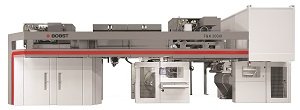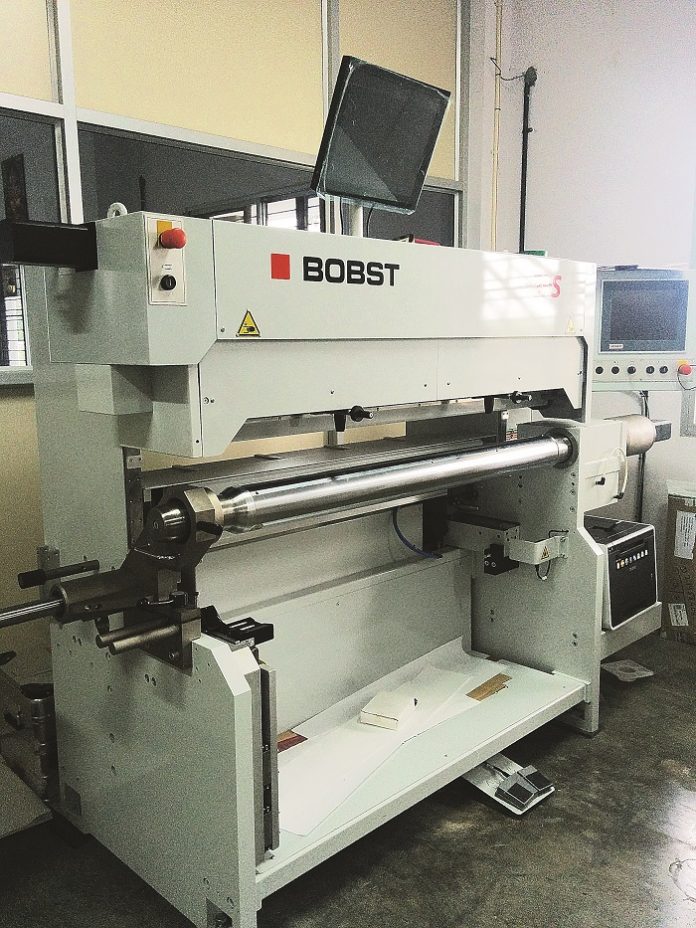Rajhans, one of the biggest Indian commercial printers has diversified not only to monocartons and labels but more recently, to a brand new purpose built flexible packaging plant. Its new high technology 120,000 square foot plant in Bidadi on the Bengaluru-Mysore road was inaugurated on 14 May 2015. Many packaging industry leaders and suppliers were present on this auspicious day and the inauguration was followed by lunch. Our correspondent Kashish Singh who attended the event, reports.

Rajhans Enterprises is one of the largest commercial sheetfed and web offset printers in India. For over three decades, Rajhans has been the leading printer of periodicals – 45 monthlies, six weeklies and plus a raft of daily newspapers from three locations.
The showpiece production assets – an F&K 8-color wide web CI flexo press and a 5-layer Macchi extrusion blown film line accompany an Expert gravure press, solvent-based and solvent less laminator from Expertand 3-side sealing machine, stand-up seal and centre seal and slitting machines from SP Ultraflex. Hence, covering the complete workflow from design, prepress to printing and postpress the new plant is completely integrated and self-sufficient except for flexo plates and gravure cylinders.
Rajhans’ Akash Balachandra says, “With the goal to focus on the flexible packaging segment, we planned to come up with a new plant. It has the capacity to print around 350 tonnes a month on various polymer and paper substrates and now as a company we are a one-stop solution for all product segments including magazines, newspapers, cartons, labels and flexible films and laminates – that is for the periodical, commercial and for the packaging segments. The whole operation is modernized,comprehensive and automated with the latest technology and complete prepress, press and postpress infrastructure.”

Rajhans’ new 1,300 mm-wide F&K 20SIX CI flexo press is the flagship of its packaging fleet. It’s features include improvements in printing quality, ease-of-use, versatility and efficient use of space. With the use of servo drives, accurate registration can be achieved across the 8 printing units. The print width is 1,250 mm while material width varies from 650 mm to 1,300 mm. Since, print length, pattern, ink and printing carrier are factors that count for printing speed, the maximum printing speed of 400 metres a minute can be achieved when using the largest possible plate cylinder circumference.The press can print on a wide variety of materials including extensible substrates such as LDPE from 25 to 350 microns in thickness, HDPE from 10 to 165 microns, PET from 8 to 80 microns, PP from 15 to 250 microns, OPP, BOPP, COPP from 10 to 95 microns, PVC from 12 to 185 microns, PA from 8 to 30 microns and paper 40 to 95 gsm with solvent-based inks.
The modular design of the new CI flexo press makes it user friendly and easy to maintain. Bobst’s smartGPS reduces the makeready time from the hours to minutes, thus reducing the production cost.
Food safety management
Rajhans’ plant is ISO 22000 certified for food safety management standards that help organizations identify and control food safety hazards; ISO PAS 223 certified for Food Packaging Material Manufacturing; ISO 9001: 2008 certified for quality management system; SEDEX 4 pillar for supply chain; and, Agmark certified by the Government of India for agricultural products.
smartGPS from Bobst
SmartGPS is Bobst’s unique offline solution, where registration and impression related set-up is done automatically at the plate mounting stage, thus avoiding the need to print for setting up impression and registration. It minimizes manual intervention by the operator while maintaining print quality without ink variations, wastage of substrate, ink, solvent, energy, or machine time.
smartGPS uses RFID chips which communicate between the plate mounter and the press controls and significantly improve press setting time. A measuring device is incorporated into the mounting machine that scans the structure of the print-ready cylinder consisting of intermediate cylinder, sleeve, tape and plate. An RFID antenna transmits the calculated data into a chip inserted in the sleeve. When the sleeves are mounted the stored data from the sleeve is transmitted to the machine controls so that each process from holding, registration and impression setting are now automated and harmonized simultaneously for all print units involved in the job. This automated process helps to substantially reduce wasted material, labour time, waste disposal costs, damage to plates due to excess impression and maintains the consistency of the process. Until new plates are mounted, all print information rests in the chip with the sleeve. This system is suitable for all packaging materials including metallized or reflective materials that can cause problems for most available optical systems.
Before loading the job onto the press, the print setting and impression variables are known well in advance with the help of smartGPS. Any problems with the mounted packaging, such as plate damage, are detected before the machine starts to run the job.











